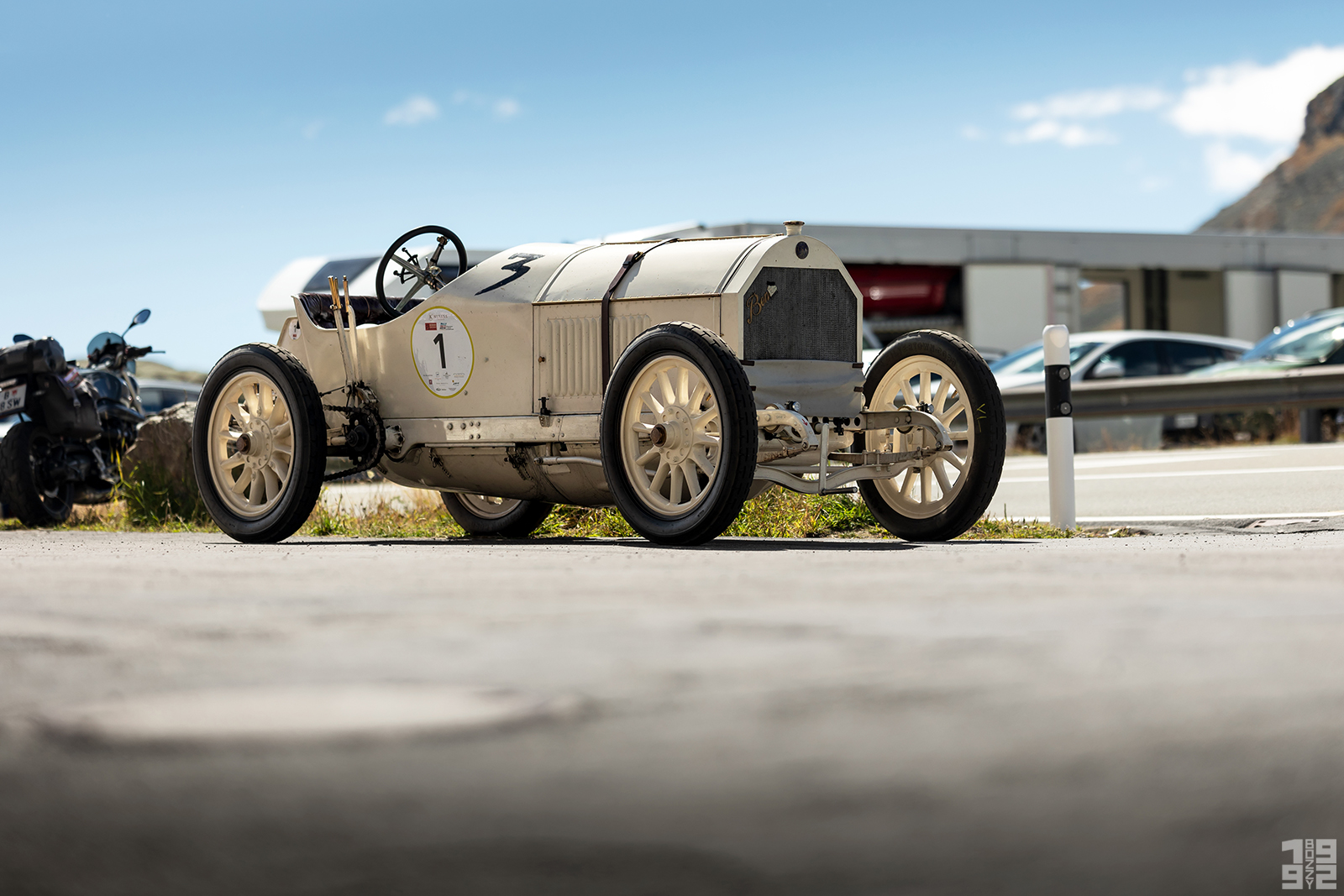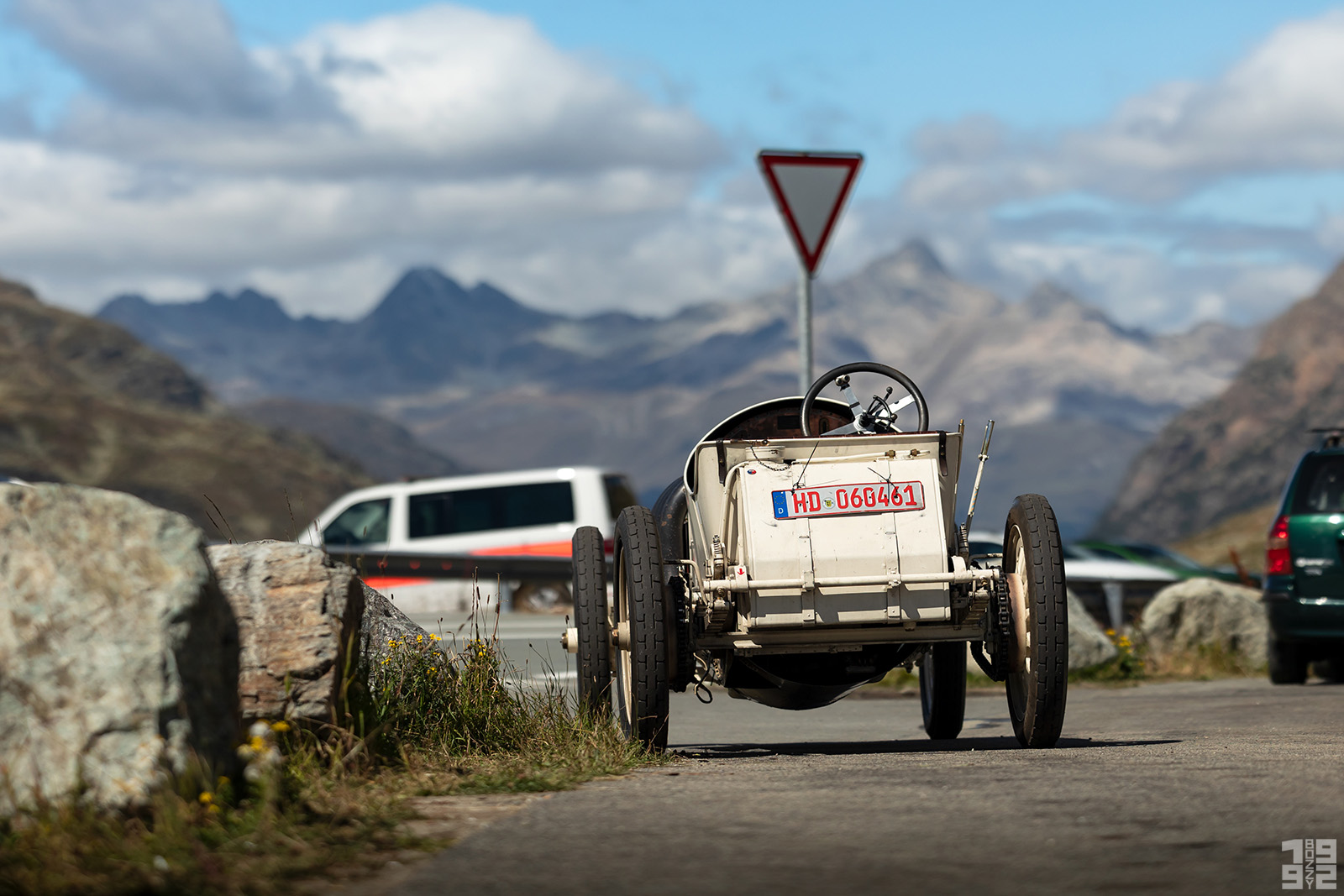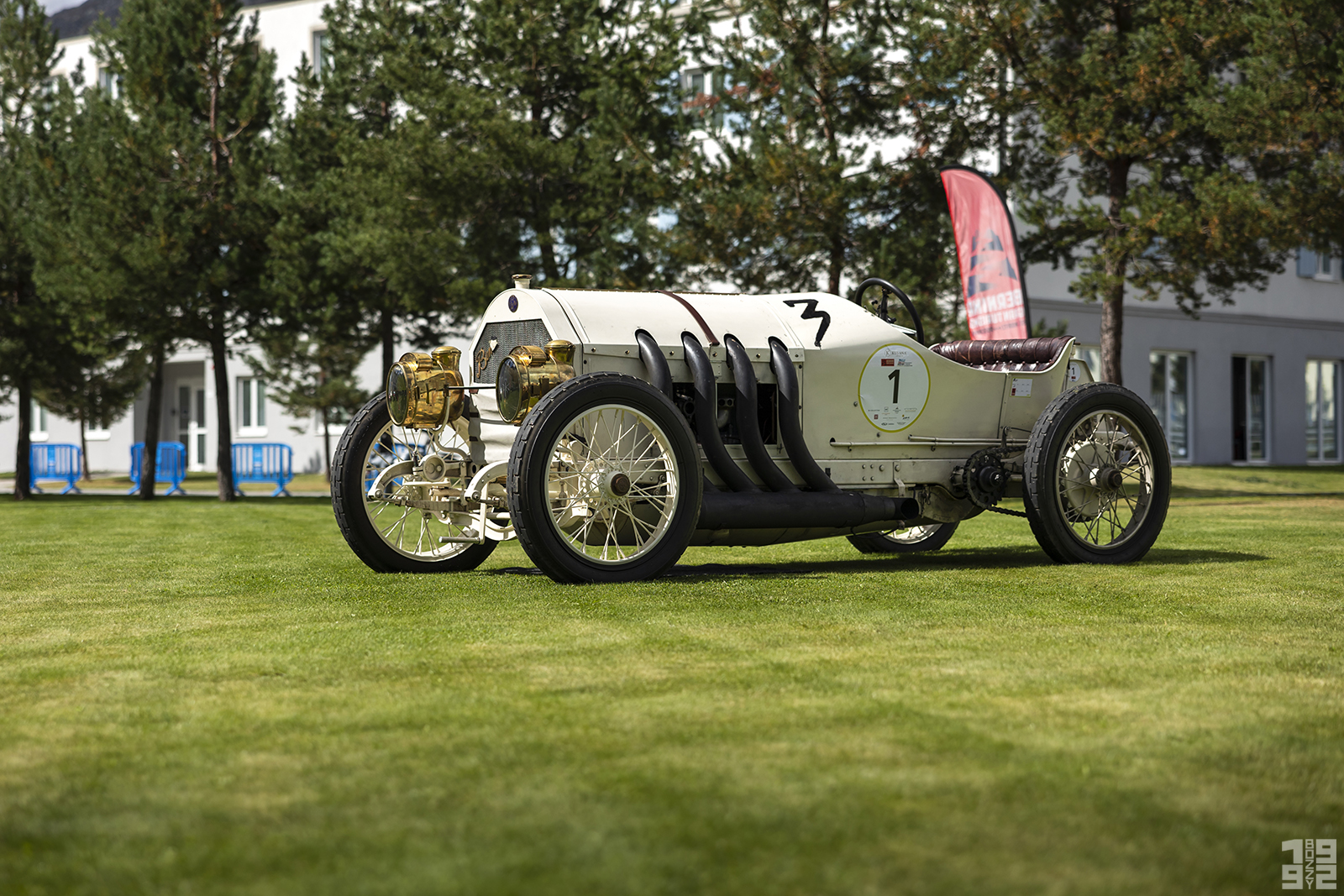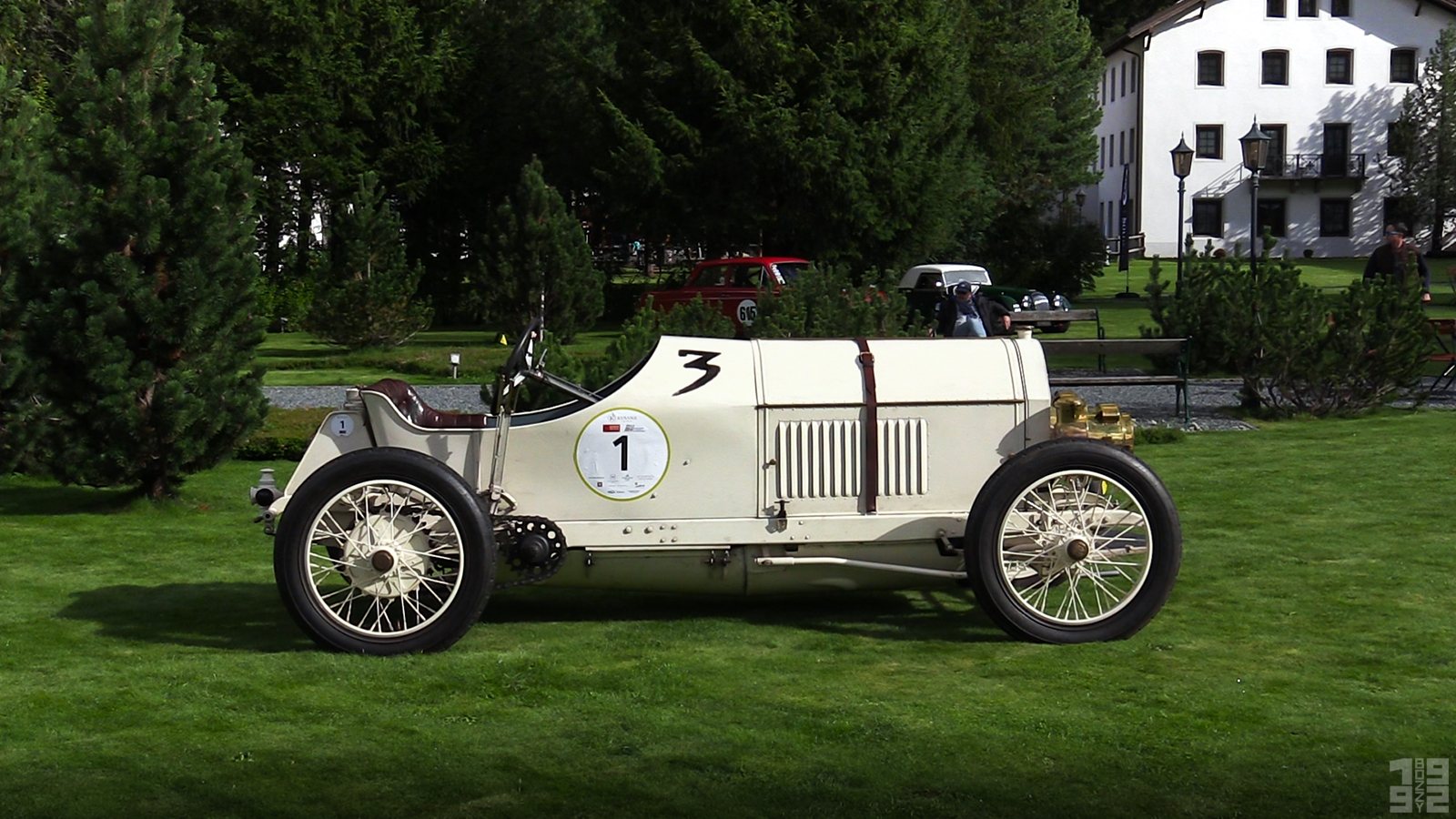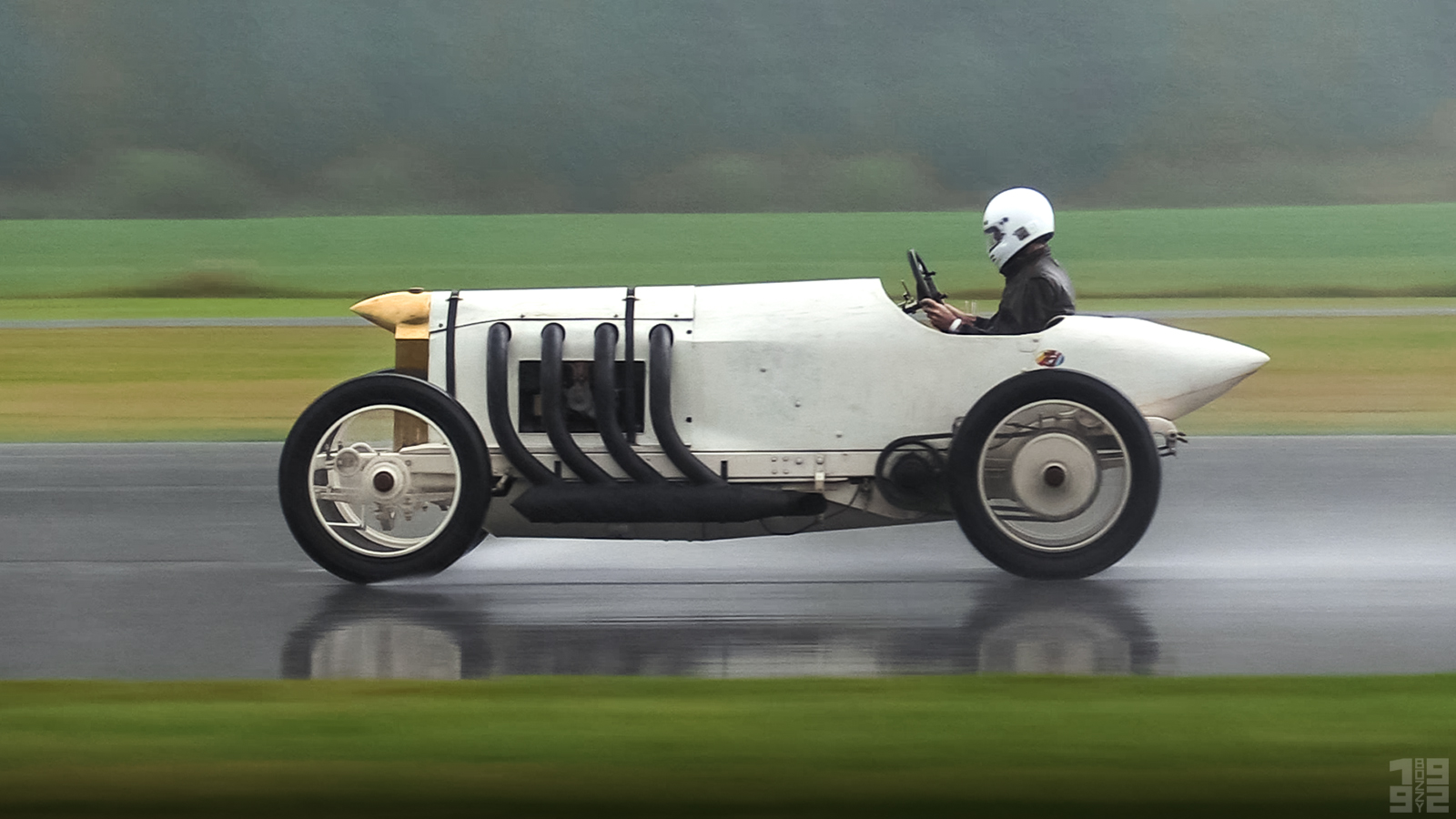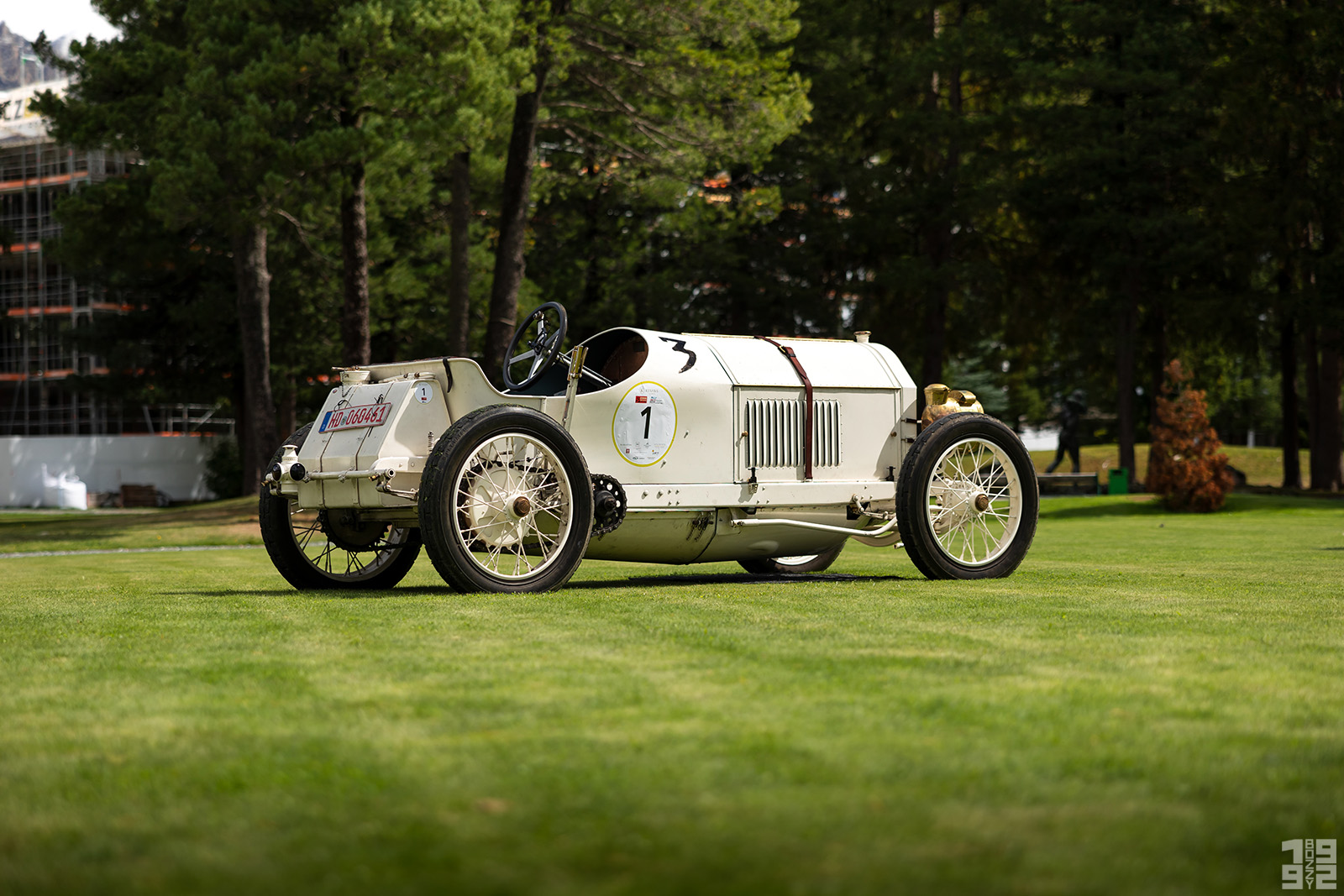The 21.5-litre Benz Which Makes The Earth Shake

You understand you are getting old when a certain type of cars that had never fascinated you before begins to interest you and, sometimes, makes you more excited than most modern stuffs out there. Something that I’ve always considered just like carriages with an engine they are now growing on me, more and more, especially when it comes to special machines like this Benz.
At the beginning of 1909, engineer Julius Ganss was given permission to design a car which could reach a speed of over 200 km/h. Initially Carl Benz was against the project, failing to see the relevance of building a land speed record car when the aim of his company was to build robust and reliable touring cars. But then his attitude changed and he came to the conclusion that the company couldn’t ignore the tricks of modern market mechanisms. The creature was called Benz 200HP.
Based on the 1908 Benz 150HP racer, the four-cylinder engine was bored out from 15.1-litres to 21.5-litres with an output of 184 hp at 1,500 rpm, which was later increased to 200 hp at 1,600 rpm after some development, and an estimated torque of 350 Nm at 1,000 rpm. It was the largest-displacement engine ever to be used in a racing or record car produced by Benz and its weight was 407 kg (the car’s total weight was 1,450kg). The development and the task of competing with this monster were assigned to Victor Hémery and Victor Demogeot.
At that time the car was still fitted with the ‘short’ body of the Benz Grand-Prix car and it entered competitions under that name. Victor Hémery took the wheel of the car for the first time during a sprint race in Brussels, where he outclasses the competition, even though the aim of the Benz 200HP was still the land-speed record. For this purpose engineers were also working to develop a new, more aerodynamic body. They made the car as narrow as possible in order to reduce wind resistance to a minimum, introducing a sharp-pointed front with a smaller radiator and a more streamlined body and tail.
The first record attempt was made at Brooklands oval, in England. Victor Héméry covered the 1km distance from a flying start at an average speed of 202.7 km/h, breaking the all-important 200 km/h mark for the first time in Europe. However this attempt revealed that racing tracks in Europe were no longer adequate for these speeds and this led Benz to concentrate its ‘200HP’ activities in America.
A Benz 200HP was shipped to America in January 1910 and it was bought by event manager Ernie Moross. The businessman nicknamed the car ‘Lightning Benz’, painting it on the side of his new purchase. With almost no preparation, Moross’ driver Barney Oldfield broke the existing world record by reaching a speed of 211.97 km/h at Daytona Beach in Florida on March 17, 1910. However, the record wasn’t recognized since the Benz had not covered the distance in the opposite direction as well, as specified in the competition guidelines.
After that, the car was used in exhibition events and races. The Benz was decorated with the imperial eagle and it was given the name ‘Blitzen-Benz’, the German translation of ‘Lightning Benz’. In 1911 Ernie Moross engaged Bob Burman, former Buick factory driver, as its new driver. Burman finally succeeded in setting an official record for the German monster: on April 23, 1911 at Daytona Beach he set a new best mark of 225.65 km/h average speed and a new land speed record of 228.1 km/h, over one kilometer from a flying start. This made the ‘Blitzen Benz’ the fastest vehicle on Earth. It was twice as fast as an aircraft and 17.51 km/h faster than the fastest rail vehicle. These records remained unbroken until 1919.
It’s thought that a total of six cars were built. The one featured in this article is from Technik Museum Speyer and it has recently undergone a long restoration work. This particular example could be fitted with both the streamlined and the ‘short’ body which was used for GP races or hillclimbs.
In fact, due to the small radiator used for the record attempts, the former turns out to be quite unfavourable for hillclimb or racing use. The conversion work from one version to the other takes about two days. Depending on the situation, another important change that has to be done is the correct choice of the two chain sprockets, with smaller ones for hillclimb or race tracks and the biggest for reaching the highest speeds.
I was lucky enough to see it not once but three times in the last few months: in chronological order at the Goodwood Festival of Speed and at the Kilomètre Lancé, in Switzerland, where it featured the ‘record’ body. After this second event, the car was fitted with the short body and the following weekend raced on the beautiful Bernina Pass hillclimb for the 2022 Bernina Gran Turismo.
If you want to see the full video I put together about this Benz 200HP you can watch it below here!
200hp benz benz 200hp bernina gran turismo blitzen benz festival of speed goodwood grand prix hillclimb hillclimb racing historic car kilometre lance land speed record lighting benz pre war car record car speed record themarbles TheMarbles.it
